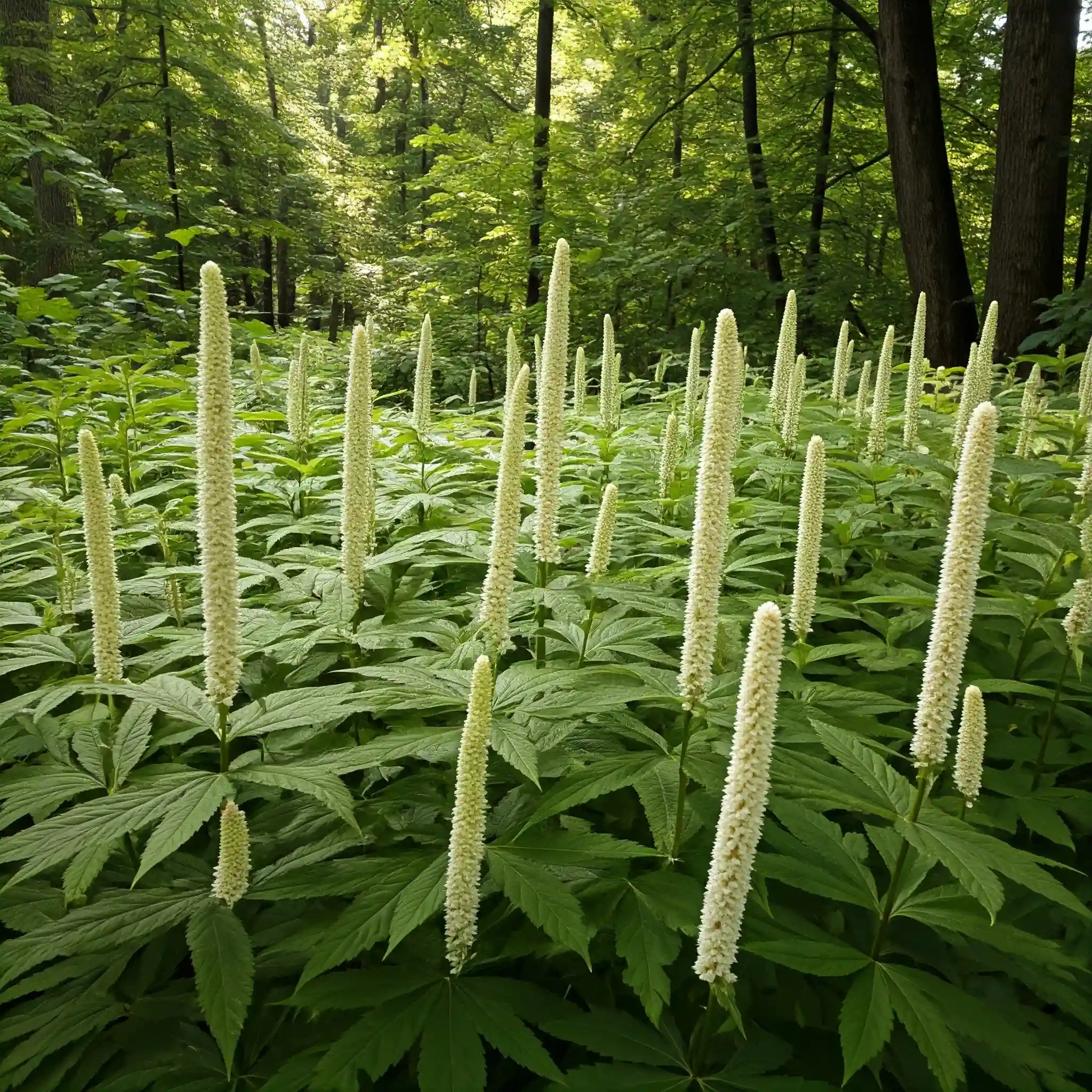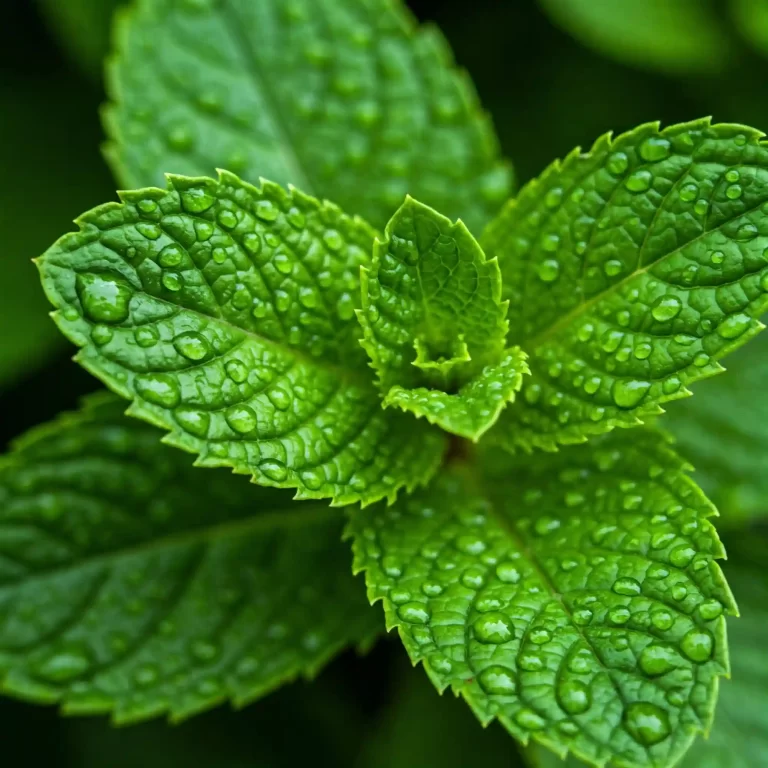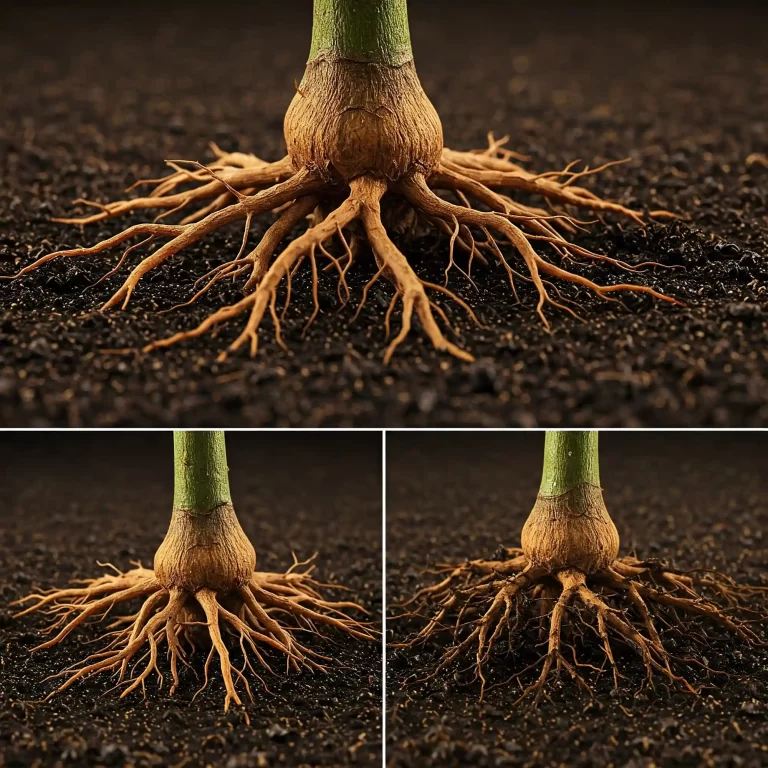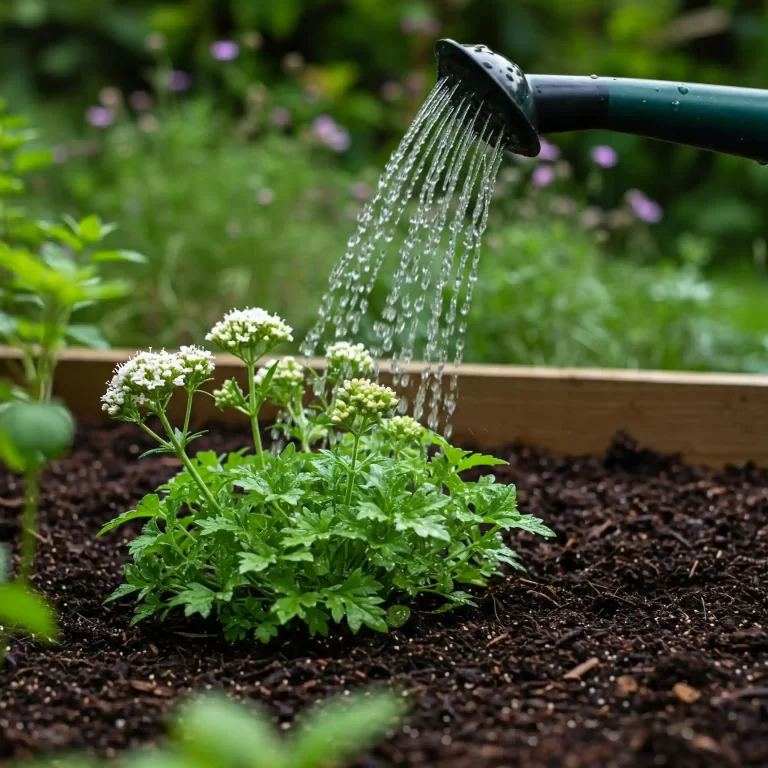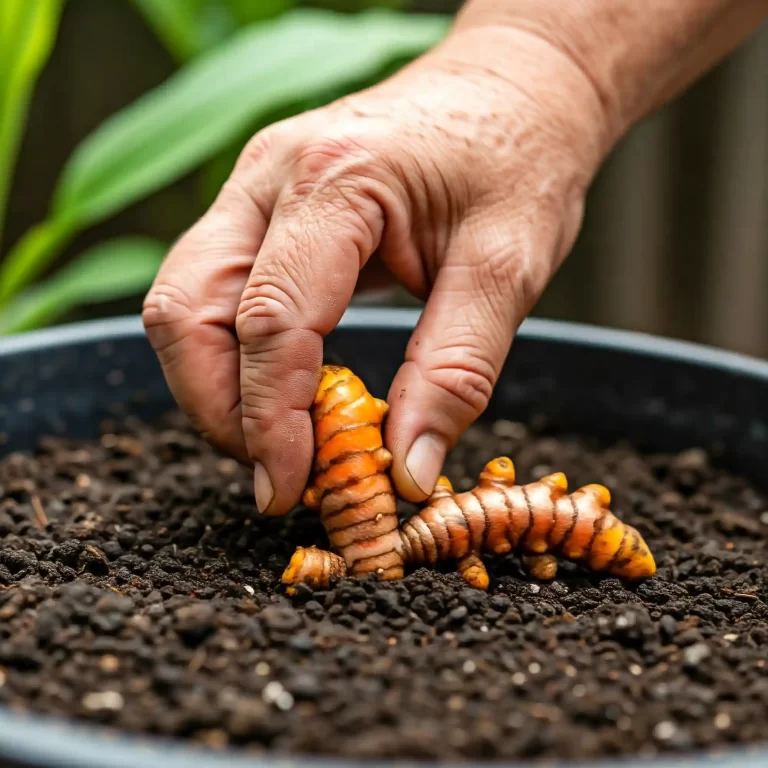Are you fascinated by the world of herbal remedies and eager to cultivate your own medicinal plants? Perhaps you’ve heard of black cohosh and its traditional uses, and you’re now considering adding it to your garden. Many gardeners find themselves frustrated by the lack of clear, concise information on how to successfully cultivate this unique herb. Sifting through conflicting advice online can be time-consuming and discouraging, leaving you unsure where to begin. I understand this struggle, and I’m here to provide you with a comprehensive guide, based on my years of experience, on how to grow black cohosh herbs successfully, from planting to harvest. You’ll gain the knowledge and confidence to nurture these fascinating plants in your own backyard.
This comprehensive guide will delve into every aspect of growing black cohosh herbs, from understanding its botanical characteristics and historical uses to mastering the art of propagation, planting, care, and harvesting. I’ll share practical tips, address common challenges, and answer frequently asked questions, empowering you to cultivate thriving black cohosh plants in your own garden, whether you’re a seasoned gardener or just starting out.
Understanding Black Cohosh (Actaea racemosa)
Black cohosh, scientifically known as Actaea racemosa (formerly Cimicifuga racemosa), is a fascinating perennial herb native to the woodlands of eastern North America. You’ll often find it thriving in shady, moist environments, mimicking the understory of forests. As a gardener who has worked with many native plants, I find it truly rewarding to cultivate this herb in a way that respects its natural habitat.
Botanical Characteristics
Black cohosh is easily recognizable by its distinctive features. It boasts large, compound leaves with toothed edges, creating a lush, fern-like appearance. During the summer months, tall, slender flower spikes emerge, adorned with small, white, fragrant blossoms. These flowers not only add beauty to the garden but also attract beneficial pollinators. The plant’s root system consists of thick, knotty rhizomes, which are the primary part used for medicinal purposes.
Historical and Traditional Uses
For centuries, Native American tribes have utilized black cohosh for its medicinal properties. You might be interested to know that it was traditionally used to treat various ailments, including menstrual cramps, menopausal symptoms, and muscle pain. This rich history underscores the plant’s value as a traditional herbal remedy. Modern herbalists also recognize black cohosh’s potential benefits, particularly for women’s health.
Importance of Responsible Sourcing
It is crucial to emphasize the importance of responsible sourcing when obtaining black cohosh. Overharvesting from the wild has become a significant concern, threatening wild populations. You can make a difference by choosing to grow your own black cohosh or purchasing it from reputable nurseries that cultivate the plant sustainably. By doing so, you contribute to the conservation of this valuable herb and its natural habitat. It’s a small act that has a big impact.
Key features of Black Cohosh
- Perennial: Lives for more than two years.
- Native Habitat: Eastern North American woodlands.
- Leaves: Large, compound, toothed.
- Flowers: Tall, white spikes, fragrant.
- Roots: Thick, knotty rhizomes (medicinally used).
- Preferred Conditions: Shade, moist soil.
Black Cohosh Compared to Other Similar Plants
| Feature | Black Cohosh (Actaea racemosa) | White Baneberry (Actaea alba) |
| Berries | None | White, poisonous |
| Flower Shape | Slender spikes | Rounded clusters |
| Leaf Shape | Toothed edges | Lobed or toothed edges |
| Medicinal Use | Primarily for women’s health | None, poisonous |
| Native Habitat | Eastern North America | Eastern North America |
This table highlights the key differences between black cohosh and a similar-looking plant, white baneberry, which is poisonous. Always be sure to correctly identify plants before using them for medicinal purposes.
I remember once mistaking a young baneberry plant for black cohosh. Thankfully, I double-checked my identification before doing anything further. It was a valuable lesson in the importance of careful observation and accurate identification in gardening. You can avoid similar mistakes by learning the key identifying features of black cohosh.
I’ve found that understanding the plant’s natural habitat provides crucial insights into its growing requirements. Since black cohosh thrives in the understory of forests, it prefers shady conditions and moist, rich soil. By replicating these conditions in your garden, you create an ideal environment for your plants to flourish.
Black Cohosh Growing Conditions: Creating the Ideal Environment
Now that you know how to plant black cohosh, let’s discuss the ideal growing conditions for this woodland herb. You see, replicating its natural habitat is key to ensuring its health and vigor. From my experience, providing the right balance of light, soil, water, and temperature is essential for successful cultivation.
Light Requirements
Black cohosh thrives in partial to full shade. You see, in its native woodland environment, it grows beneath the canopy of trees, receiving filtered sunlight. In your garden, choose a location that receives dappled sunlight or is shaded for most of the day. Avoid planting it in areas with direct afternoon sun, as this can scorch the leaves and stress the plant.
Soil Requirements
Black cohosh prefers rich, moist, well-drained soil with plenty of organic matter. You see, this type of soil retains moisture while also allowing for adequate drainage, preventing root rot. To improve your soil, amend it with compost, leaf mold, or other organic materials. This will enhance its fertility, drainage, and water-holding capacity.
Watering
Consistent moisture is crucial for black cohosh, especially during dry periods. You see, this herb is native to moist woodlands, so it’s adapted to regular rainfall. Water your plants regularly, ensuring the soil is consistently moist but not waterlogged. Avoid overhead watering, as this can promote fungal diseases. Instead, water at the base of the plant, focusing on the soil.
Temperature and Humidity
Black cohosh thrives in cooler climates, specifically USDA zones 3-8. You see, it’s adapted to the cold winters and cool summers of these regions. If you live in a warmer climate, you can still grow black cohosh, but you’ll need to provide extra shade and ensure the soil stays consistently moist.
How to Grow Black Cohosh in Containers
If you don’t have a suitable garden space, you can also grow black cohosh in containers. You see, this allows you to control the growing conditions more easily.
- Choosing the Right Container: Select a container that is large enough to accommodate the plant’s root system. A pot that is at least 18 inches in diameter and depth is ideal.
- Potting Mix Considerations: Use a high-quality potting mix that is rich in organic matter and provides good drainage. You can amend the potting mix with compost or perlite to improve its drainage and aeration.
- Watering and Drainage in Containers: Pay close attention to watering, as container-grown plants tend to dry out more quickly than those grown in the ground. Ensure the container has drainage holes to prevent waterlogging.
I remember one summer when I neglected to water my black cohosh plants during a heat wave. The leaves started to wilt and brown, and I thought I had lost them. Thankfully, I was able to revive them with consistent watering and extra shade. This experience taught me the importance of providing consistent moisture, especially during hot weather.
I’ve also found that mulching around the base of the plants helps to retain moisture, suppress weeds, and regulate soil temperature. You can use organic mulches such as wood chips, bark, or straw.
By providing the right growing conditions, you can create a thriving environment for your black cohosh plants. You’ll be rewarded with beautiful foliage, fragrant flowers, and the satisfaction of cultivating your own medicinal herbs.
Caring for Your Black Cohosh Plants
Now that you’ve planted your black cohosh and created the ideal growing environment, it’s time to focus on ongoing care. You see, like any plant, black cohosh requires regular attention to thrive. From my experience, providing proper fertilization, mulching, pest and disease control, and winter care will ensure your plants remain healthy and productive for years to come.
Fertilizing
Black cohosh is not a heavy feeder, but a light application of fertilizer in the spring can promote healthy growth. You see, I prefer to use compost or a balanced organic fertilizer. This provides the plants with essential nutrients without the risk of burning the roots. Avoid over-fertilizing, as this can lead to excessive foliage growth at the expense of flowering.
Mulching
Mulching is a valuable practice for black cohosh. You see, it helps to retain soil moisture, suppress weeds, and regulate soil temperature. I recommend using organic mulches such as wood chips, bark, or straw. Apply a 2-3 inch layer of mulch around the base of the plants, keeping it away from the stems to prevent rot.
Pest and Disease Control
Black cohosh is generally resistant to pests and diseases, but there are a few issues to watch out for. You see, common pests include slugs and snails, which can damage the foliage. You can control these pests by handpicking them or using organic slug and snail baits. Fungal diseases, such as powdery mildew, can also occur, especially in humid conditions. To prevent fungal diseases, ensure good air circulation around the plants and avoid overhead watering.
Winter Care
In colder climates (USDA zones 3-8), black cohosh benefits from winter protection. You see, this helps to prevent frost damage to the rhizomes. After the foliage has died back in the fall, you can apply a thick layer of mulch around the base of the plants. This will insulate the roots and protect them from freezing temperatures.
Troubleshooting Common Problems
| Problem | Cause | Solution |
| Wilting leaves | Insufficient watering, heat stress | Water deeply and regularly, provide more shade |
| Yellowing leaves | Nutrient deficiency, poor drainage | Amend soil with compost, improve drainage |
| Powdery mildew | Humid conditions, poor air circulation | Improve air circulation, apply organic fungicide |
| Slug/snail damage | Presence of slugs/snails | Handpick pests, use organic slug/snail bait |
| Poor flowering | Insufficient sunlight, over-fertilizing | Provide more sunlight, reduce fertilizer application |
| Slow growth from seed | Dormancy, improper stratification | Ensure proper stratification, maintain consistent moisture during germination |
This table outlines some common problems you might encounter when growing black cohosh and provides solutions for addressing them.
I remember one spring when my black cohosh plants were attacked by slugs. I was devastated to see the damage to the foliage. However, I quickly took action by handpicking the slugs and applying organic slug bait. The plants soon recovered, and I learned the importance of regular monitoring for pests.
I’ve also found that providing consistent care throughout the growing season is essential for healthy black cohosh plants. This includes regular watering, occasional fertilization, and monitoring for pests and diseases. By following these simple practices, you can ensure your plants thrive and provide you with years of enjoyment.
Harvesting Black Cohosh Roots
After nurturing your black cohosh plants for several years, you may be ready to harvest their roots. You see, the roots are the primary part of the plant used for medicinal purposes. From my experience, knowing when and how to harvest them properly is crucial for maximizing their potency and ensuring the plant’s continued health.
When to Harvest
Black cohosh roots are typically harvested in the fall, after the foliage has died back. You see, this is when the plant’s energy is concentrated in the roots. It’s important to wait at least 3-4 years after planting before harvesting, as this allows the plants to mature and develop a robust root system.
How to Harvest the Roots Properly
- Carefully Dig Up the Plant: Use a garden fork or shovel to carefully loosen the soil around the base of the plant. Gently lift the plant from the ground, taking care not to damage the roots.
- Clean the Roots: Remove any excess soil from the roots by gently shaking or rinsing them with water.
- Divide the Rhizomes (Optional): If you wish to propagate more plants, you can divide the rhizomes at this time. Use a sharp knife to cut the rhizomes into sections, ensuring each section has at least one growth bud.
- Dry the Roots: Spread the roots out on a clean, dry surface in a well-ventilated area. You can also use a dehydrator set to a low temperature. Allow the roots to dry completely, which may take several days or weeks.
Storing the Harvested Roots
Once the roots are completely dry, you can store them in an airtight container in a cool, dark place. You see, this will help to preserve their medicinal properties. Properly stored, dried black cohosh roots can last for several years.
Sustainable Harvesting Practices
It’s important to harvest black cohosh sustainably to protect wild populations. You see, overharvesting has become a significant concern. When harvesting from your own garden, only harvest a portion of the roots from each plant, leaving enough for the plant to regenerate. This will ensure that your plants continue to thrive for years to come.
I remember the first time I harvested black cohosh roots from my garden. I was amazed by the intricate network of roots and the earthy aroma they emitted. It was a rewarding experience to connect with the plant in this way and to appreciate its medicinal value.
I’ve also learned that proper drying and storage are essential for preserving the quality of the harvested roots. You see, if the roots are not dried properly, they can mold or rot. By following these simple steps, you can ensure that your harvested roots retain their potency and can be used for various purposes.
Now that you know how to harvest black cohosh roots, you can enjoy the fruits of your labor and appreciate the many benefits of this valuable herb.
Frequently Asked Questions (FAQ)
Throughout my years of gardening and working with black cohosh, I’ve encountered many common questions from fellow gardeners. You see, it’s natural to have queries when cultivating a new plant, especially one with such a rich history and specific growing requirements. I’ve compiled a list of frequently asked questions to address some of your potential concerns and provide further clarity on growing black cohosh herbs.
How to Grow Black Cohosh Herbs in Containers Indoors?
Growing black cohosh indoors can be challenging, as it prefers a period of winter dormancy. However, it’s possible with careful attention to its needs. You see, the key is to replicate its natural environment as closely as possible.
- Choose a large container with drainage holes.
- Use a well-draining potting mix amended with compost.
- Provide a cool, shady location, away from direct sunlight.
- Water regularly, ensuring the soil stays moist but not waterlogged.
- During the winter months, provide a period of dormancy by placing the container in a cool, dark location with minimal watering.
How to Grow Black Cohosh Herbs from Seed Successfully?
Growing black cohosh from seed requires patience, as the seeds have a dormancy period. You see, the key to successful germination is stratification.
- Stratify the seeds by mixing them with moist sand or vermiculite and refrigerating them for 2-3 months.
- Sow the seeds in the fall or early spring in a shady location with moist soil.
- Maintain consistent moisture during germination, which can take several months.
How to Grow Black Cohosh Herbs in Zone 5 for Beginners?
Black cohosh is well-suited to zone 5, but there are a few things to keep in mind. You see, the winters in this zone can be harsh.
- Plant in a location that provides protection from strong winds and winter sun.
- Apply a thick layer of mulch in the fall to protect the roots from freezing temperatures.
What is the Best Way to Grow Black Cohosh Herbs at Home?
The best way to grow black cohosh at home is to replicate its natural woodland environment. You see, this means providing shade, moist soil, and good drainage.
- Choose a shady location in your garden.
- Amend the soil with compost or other organic matter.
- Water regularly, especially during dry periods.
How to Grow Black Cohosh Herbs for Medicinal Purposes Effectively?
To maximize the medicinal properties of black cohosh, focus on growing healthy plants. You see, this means providing the right growing conditions and harvesting the roots at the appropriate time.
- Provide optimal growing conditions, including shade, moist soil, and good drainage.
- Harvest the roots in the fall, after the foliage has died back.
- Dry and store the roots properly to preserve their medicinal properties.
How to Grow Black Cohosh Herbs from Rhizomes Step by Step?
Dividing rhizomes is a quick and reliable way to propagate black cohosh. You see, this method allows you to create new plants from a mature plant.
- Carefully dig up a mature black cohosh plant.
- Gently separate the rhizomes, ensuring each section has at least one growth bud.
- Plant the divided rhizomes in prepared planting sites with shade and moist soil.
How to grow black cohosh herbs in partial shade with moist soil?
Black cohosh thrives in conditions that mimic its natural woodland habitat. You see, this means providing partial shade and consistently moist soil.
- Choose a location that receives dappled sunlight or is shaded for most of the day.
- Amend the soil with compost or other organic matter to improve its moisture-holding capacity.
- Water regularly, ensuring the soil stays moist but not waterlogged.
How to grow black cohosh herbs and prevent common plant diseases?
While black cohosh is generally resistant to diseases, there are a few precautions you can take. You see, good air circulation and proper watering practices can help to prevent fungal diseases.
- Plant in a location with good air circulation.
- Avoid overhead watering.
- Monitor plants for signs of pests or diseases and take appropriate action.
How to grow black cohosh herbs for a sustainable herbal garden?
Growing black cohosh sustainably involves responsible sourcing and cultivation practices. You see, this helps to protect wild populations and ensures the long-term availability of this valuable herb.
- Avoid wildcrafting black cohosh.
- Purchase plants or seeds from reputable nurseries that cultivate the plant sustainably.
- Harvest roots responsibly, leaving enough for the plants to regenerate.
I hope these frequently asked questions have provided you with further insights into growing black cohosh herbs. You see, I believe that by sharing our knowledge and experiences, we can empower each other to become more successful gardeners.
Conclusion
Growing black cohosh herbs can be a truly rewarding experience. You see, not only do you get to enjoy the beauty of this unique plant in your garden, but you also gain access to its valuable medicinal properties. By following the tips and techniques I’ve shared in this guide, you can successfully cultivate black cohosh and reap its many benefits.
I encourage you to embark on this gardening adventure and experience the joy of nurturing your own black cohosh plants. You see, with a little patience and attention to detail, you can create a thriving patch of this wonderful herb in your own backyard.
Remember, responsible sourcing and sustainable harvesting practices are crucial for protecting wild populations of black cohosh. You see, by choosing to grow your own or purchasing from reputable sources, you contribute to the conservation of this valuable plant.
I hope this comprehensive guide has provided you with the knowledge and confidence to grow black cohosh herbs successfully. You see, I believe that everyone can experience the joy of gardening and the satisfaction of cultivating their own medicinal herbs.
Now, go forth and create your own black cohosh haven!
